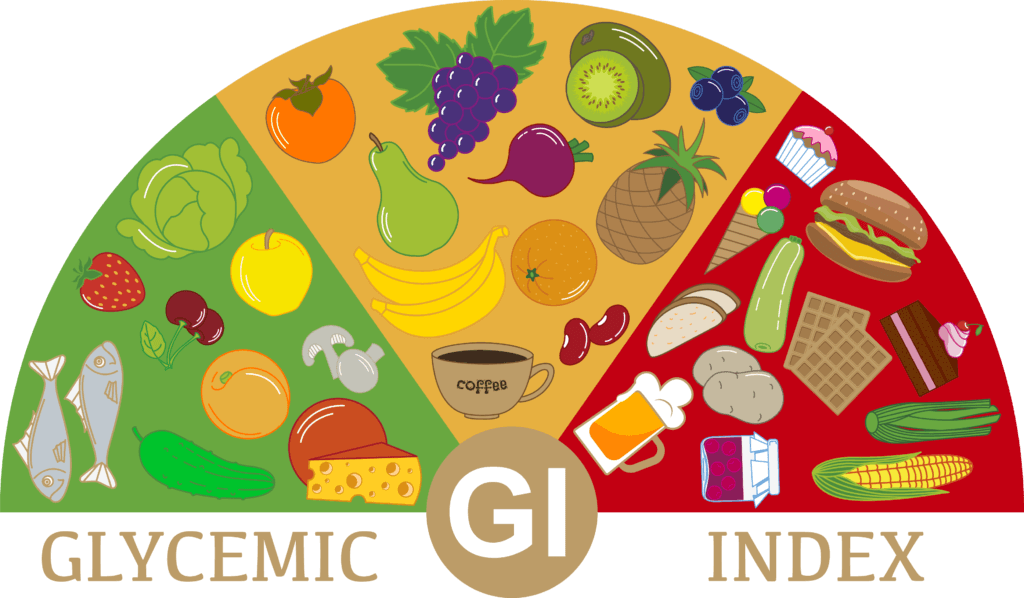If you’ve ever felt an energy crash after a high-carb meal or wondered why some foods keep you fuller longer, you might be asking: what is the glycemic index?
The glycemic index (GI) is a scale from 0 to 100 that ranks carbohydrate-containing foods based on how quickly they raise blood sugar after eating. Understanding this simple tool can help you stabilize your energy, support weight management, and reduce the risk of chronic disease.
🧪 What Is the Glycemic Index?
The glycemic index measures how fast a food containing carbohydrates increases blood glucose levels:
- High GI (70 or above): Rapid spike in blood sugar
- Medium GI (56–69): Moderate impact
- Low GI (55 or under): Slow, steady release of glucose
By choosing low glycemic index foods, you support better digestion, balanced energy, and improved metabolic health.

🔍 Why the Glycemic Index Matters
Eating mostly low-GI foods helps:
- ✅ Prevent blood sugar spikes and crashes
- ✅ Maintain steady energy and mood
- ✅ Improve insulin sensitivity
- ✅ Reduce cravings and overeating
- ✅ Lower risk of type 2 diabetes and heart disease
In contrast, high-GI foods may lead to:
- 🚨 Sudden energy crashes
- 🚨 Increased hunger
- 🚨 Belly fat accumulation
- 🚨 Long-term blood sugar issues
Do you enjoy learning about macronutrients, superfoods and health tips?
Subscribe to our newsletter and expert insights on fitness, nutrition, and overall wellness, delivered straight to your inbox every month.
🥦 Examples of GI Levels
| GI Level | Foods |
|---|---|
| Low (≤55) | Lentils, oats, sweet potatoes, apples, non-starchy veggies |
| Medium (56–69) | Brown rice, bananas, couscous, raisins |
| High (≥70) | White bread, sugary cereals, white rice, watermelon, soda |

🍽️ How to Use the Glycemic Index Daily
You don’t need to memorize numbers—just follow these tips:
- Pair carbs with protein or fat (e.g., rice + chicken + avocado)
- Choose whole over processed (brown rice > white rice)
- Add fiber (think beans, seeds, veggies)
- Watch fruit ripeness (green bananas = lower GI)
Want personalized advice on macro coaching from our in-house Functional Nutritionist? If you are interested in learning more about 1:1 coaching program, book a complimentary call
or send email to nini@rxfitatx.com
⚖️ GI Is a Guide, Not a Rule
The glycemic index is a helpful nutrition tool, not a strict rulebook. Focus on overall quality: whole foods, lean proteins, healthy fats, and fiber-rich carbs. Use the GI to make smarter choices—your body and brain will thank you.
What is the glycemic index? It’s your new ally in balancing blood sugar and energy—for better moods, metabolism, and long-term wellness.


